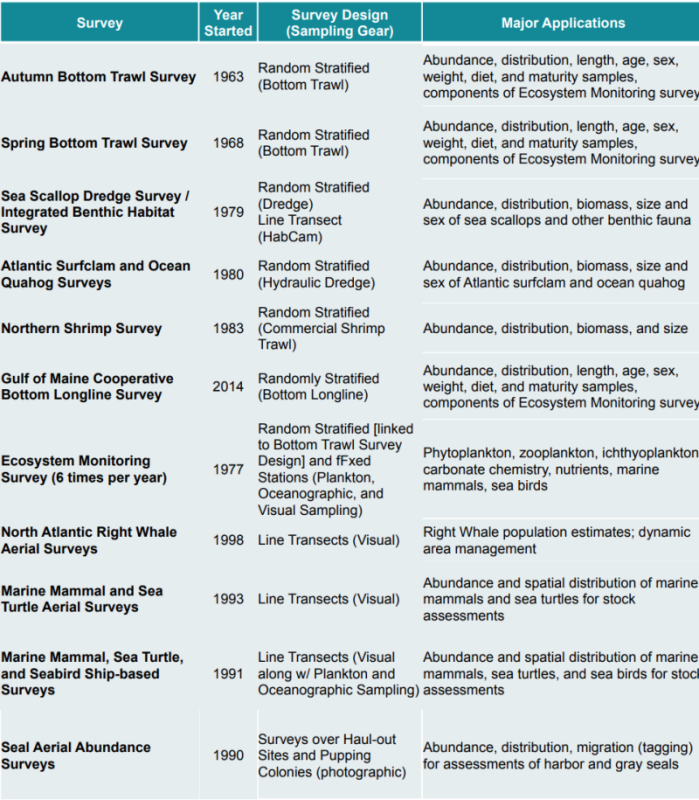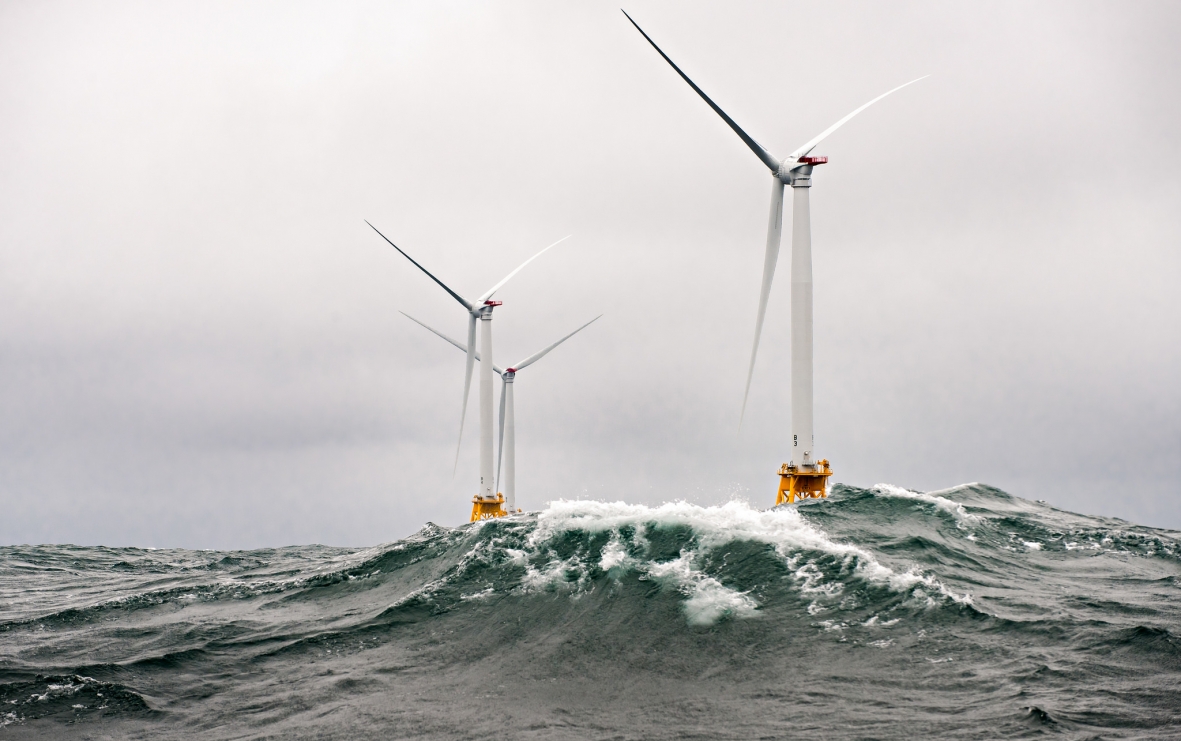Offshore wind energy projects now planned off the U.S. East Coast will have an impact on at least 13 NMFS fisheries surveys, and a new draft ‘mitigation strategy’ has been proposed by the agency together with the Bureau of Ocean Energy Management.
Limitations on towing gear near turbine arrays, conducting aerial surveys and other impacts from the new energy industrial development are inevitable, and the new document out for public comment will be the subject of online discussions hosted by the agencies March 29 and March 30.
The strategy shows how the development of vast offshore turbine arrays could have profound effects on the annual survey work critical for keeping U.S. fisheries healthy and sustainable.
“For offshore wind developments with approved Construction and Operations Plans (COPs), the opportunity to avoid impacts has passed for NOAA Fisheries surveys,” the draft strategy acknowledges. “In these cases, this Implementation Strategy focuses on mitigating the impact over time through changes and additions to NOAA Fisheries surveys.”
There’s still time to reduce the future impact from additional wind developments, by documenting “impacts in the environmental review process and considering the impacts in the definition and approval process of future wind energy lease areas and lease sales,” the document states. “If these impacts are not avoided or minimized, this strategy can be used to mitigate the impacts.”
With two construction and operations plans in place for two projects – Vineyard Wind off southern Massachusetts and Sunrise Wind about 30 miles east of Montauk, N.Y. – NMFS and BOEM already know how the surveys will be affected:
● Survey vessels and aircraft will be forced to keep distance from wind development areas because of operational and safety limitations.
● Impacts on the random-stratified statistical design of surveys, which is the basis for scientific assessments, advice, and analyses.
● Changes to the sea floor and water column habitats from turbine construction and operation, “requiring new designs and methods to sample new habitats.”
● Reduced sampling productivity from the navigation impacts of wind energy infrastructure on aerial and vessels surveys.
The impact on longstanding studies by the National Oceanic and Atmospheric Administration will be substantial, the document says.
“There are currently more than 17 offshore wind energy projects in various stages of development in the Northeast totaling more than 1.7 million acres. New areas (in the New York Bight) were leased in February 2022 and there are also several additional potential lease areas and planning areas in the region,” the paper notes.
Thirteen important surveys will be affected – from bottom trawl surveys to marine mammal studies – and “as the footprint of offshore wind energy development grows, additional surveys may be impacted and the impacts to existing surveys will likely increase. These surveys support management of more than 40 fisheries in the region, more than 30 marine mammal species, and 14 threatened and endangered species.”

Those long-running studies play into other science work, including ecosystem and climate assessments, the paper stresses.
“NOAA Fisheries surveys have occurred in the region since the early 1960’s, and, as a result, the Northeast U.S. Shelf Ecosystem is one of the best understood marine ecosystems in the world - a remarkable fact resulting from decades of investment of hundreds of scientists, thousands of fishers, and hundreds of millions of dollars."
“While this initial strategy focuses on the Northeast and Mid-Atlantic, it will serve as a model to address the impacts of offshore wind” on surveys nationwide, NMFS officials said in announcing the plan.
“This strategy will help maintain the quality of our surveys and data, while also facilitating the development of offshore wind energy,” said Janet Coit, assistant administrator for NMFS. “Sustaining our surveys allows NOAA Fisheries to monitor trends with species over time, with the broader goal of understanding marine ecosystems, particularly in the face of a rapidly changing climate.”







.jpg.small.400x400.jpg)